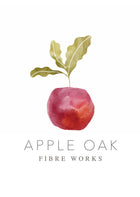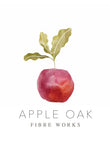
ALKANET ~ Dye Colour: Purple, grey
Our ALKANET ROOT is harvested in India. Its colour ranges from purple to blue to grey, depending on the extraction method and mordants used. Please note that alcohol extraction is necessary for obtaining true purples.
Colour fastness: Poor
Though we sell alkanet in our shop, I never use it. It isn't lightfast and due to needing a heated alcoholic solution it can become quite pricey when living in Ireland! However, if you would like to give it a go, alkanet is a mordant dye after extraction.
- To extract 65g of powdered root you need to heat 1litre of 35% alcohol to 40C/104F.
- Once extracted add the 1litre to a dyebath of 2-8L.
- Add your mordanted textiles and proceed as usual.
Join The Natural Dyers & Growers Academy to share your experiences and get support from fellow growers.


